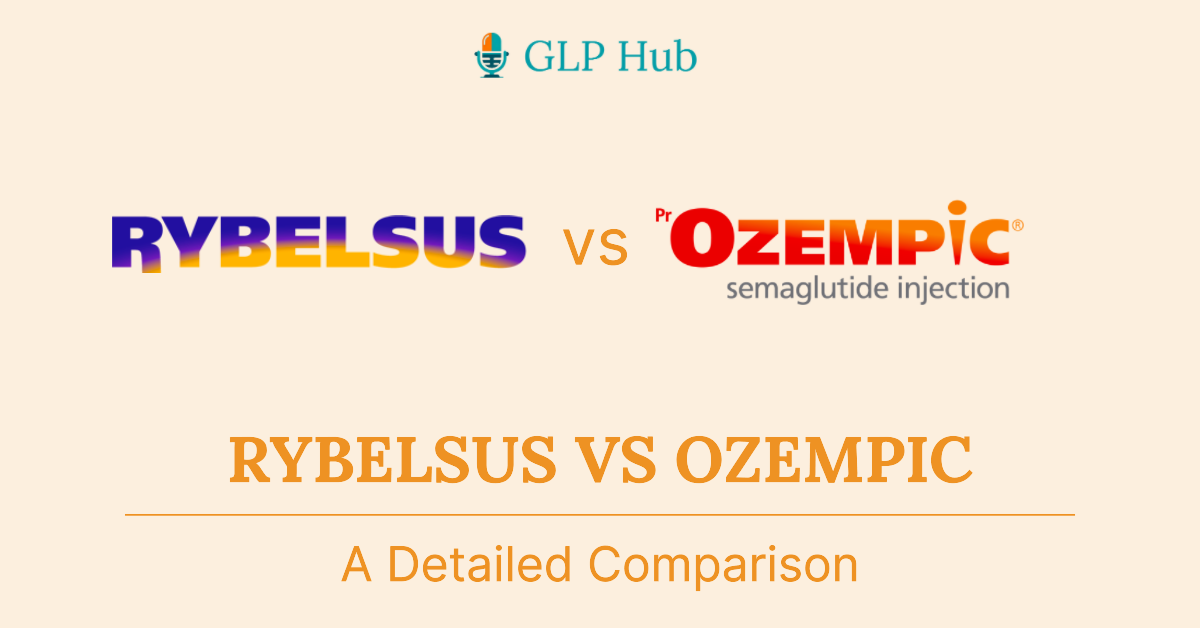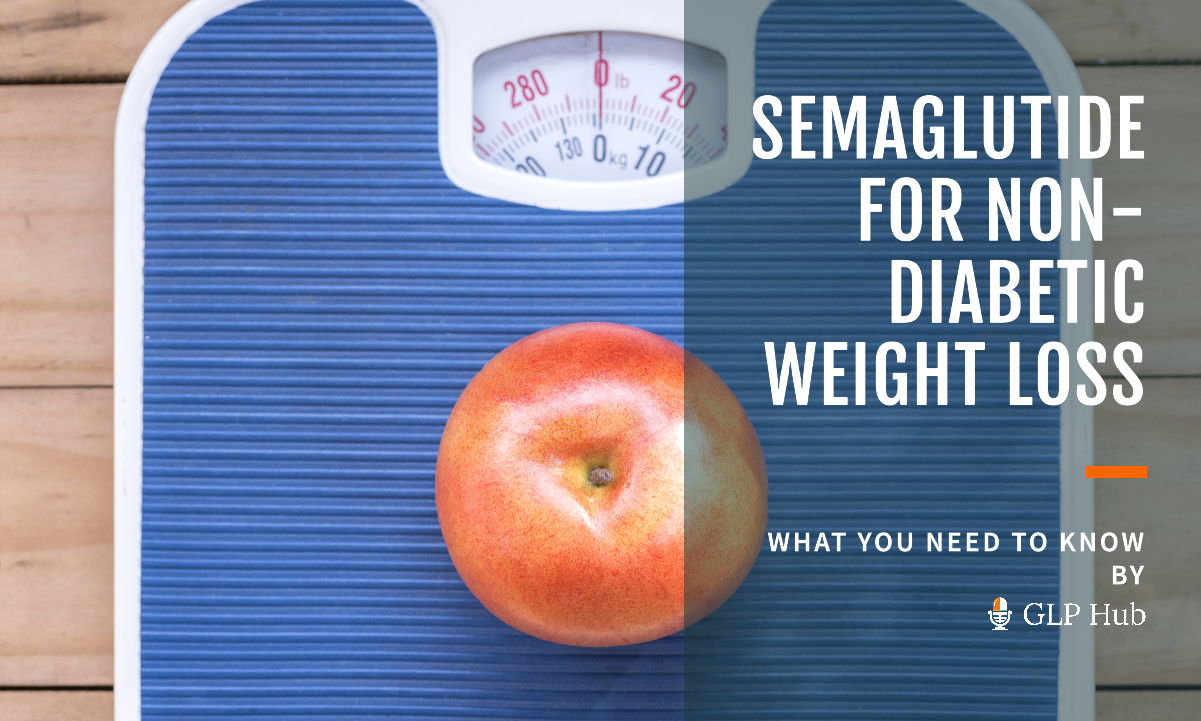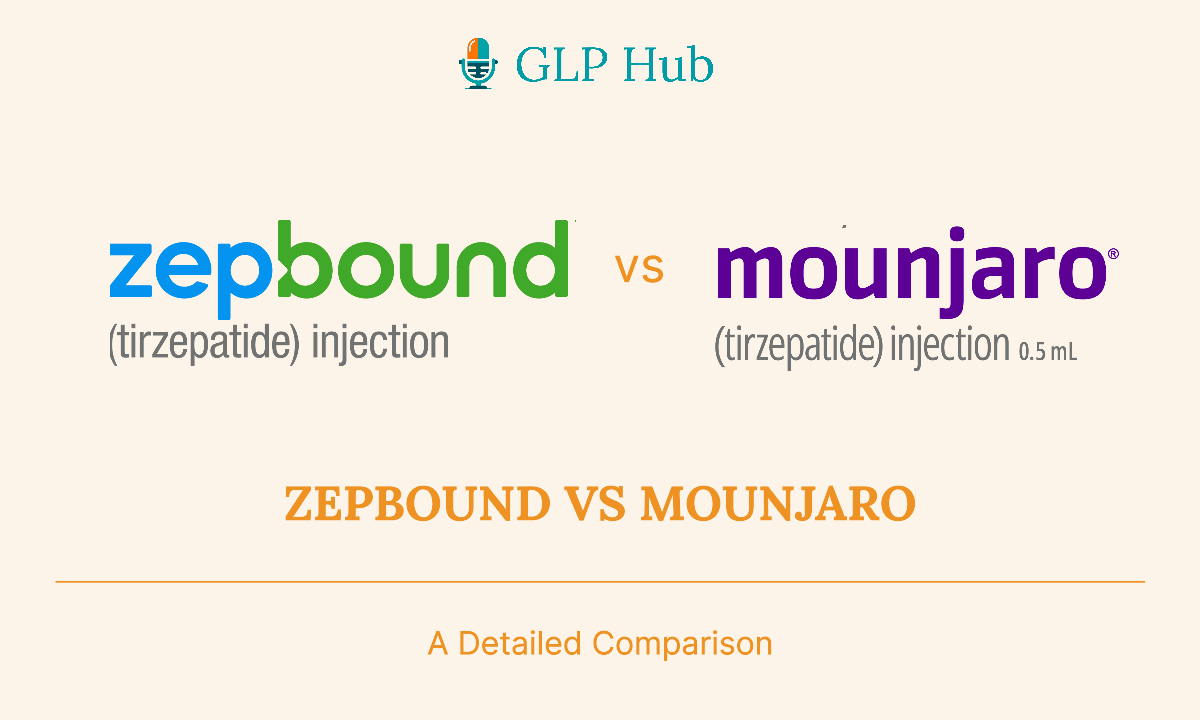Are you researching Rybelsus and Ozempic for weight loss, and want to know the differences between these two popular drugs? Which one is more effective? What are the potential side effects?
In this article, we’ll compare and contrast Rybelsus and Ozempic to help you determine which one might be right for you. We’ll look at how they work, dosing, cost, weight loss results from clinical trials, and more.
What Are Rybelsus and Ozempic?
Rybelsus and Ozempic are both medications used for weight loss and treating diabetes using the active ingredient semaglutide. These drugs work by stimulating the release of insulin and suppressing the production of glucagon, a hormone that raises blood sugar.
How Are They Administered?
Rybelsus is an oral tablet, so it’s taken by mouth once a day. Ozempic comes as a solution in a pre-filled pen injector for subcutaneous injection, meaning it’s injected into the fat tissue under the skin. Ozempic injections are given once weekly. While an oral medication may seem more convenient, injections can provide more consistent absorption and may lead to improved blood sugar control for some.
Difference #1 between Rybelsus and Ozempic: How they’re administered
Rybelsus is an oral tablet taken by mouth once a day, while Ozempic is injected into the fat tissue under the skin once weekly.
But, while an oral medication may seem more convenient, injections can provide more consistent absorption and may lead to improved blood sugar control.
How Much Do They Cost?
Rybelsus and Ozempic are both brand-name medications, so they can be expensive.
Rybelsus typically costs between $500 to $900 per month without insurance. Ozempic is usually slightly less, ranging from $450 to $850 per month. The exact price you pay will depend on your insurance coverage and pharmacy. Generic versions of these drugs are not currently available, but less expensive biosimilar versions may become available in the coming years.
Difference #2 between Rybelsus and Ozempic: How much they cost
Rybelsus typically costs between $500 to $900 per month without insurance, while Ozempic ranges from $450 to $850 per month.
Side Effects and Risks
The most common side effects of Rybelsus and Ozempic include nausea, diarrhea, decreased appetite, and stomach pain. Injection site reactions can also occur with Ozempic.
These medications may cause dangerously low blood sugar in some people, especially when you first start taking them or increase the dose. Rare but serious side effects include pancreatitis, vision changes, and kidney damage. You’ll need to be monitored closely by your doctor when first starting these drugs.
How Rybelsus and Ozempic Work for Weight Loss
Appetite suppression and slowing digestion
Rybelsus and Ozempic work in similar ways. They contain semaglutide, a GLP-1 receptor agonist that mimics the effects of GLP-1.
By activating GLP-1 receptors, both drugs suppress appetite and slow digestion. This means you feel full faster and stay full longer after eating, which reduces calorie intake and leads to weight loss over time. They also slow the emptying of the stomach, which prolongs the feeling of fullness from meals.
Improved blood sugar control
In addition to weight loss effects, Rybelsus and Ozempic improve blood sugar control in people with type 2 diabetes by stimulating insulin production and reducing glucagon secretion.
For weight loss, the effects on blood sugar are modest but can still be helpful for those with prediabetes or type 2 diabetes.
Dosage and Administration
The dosages of Rybelsus and Ozempic start low and are gradually increased to minimize side effects.
Rybelsus dosage begins at 3 mg once daily for 30 days, then increases to 7 mg and up to 14 mg. Ozempic starts at 0.25 or 0.5 mg once weekly, and can increase up to 1 mg. Both drugs are meant to be used long-term to sustain weight loss, as stopping treatment will result in the weight returning over time.
Key Differences Between Rybelsus vs. Ozempic
This is what you’re here for! Let’s look at the biggest differences between the two medications.
Mechanism of Action
Rybelsus and Ozempic work in similar ways by stimulating insulin production and reducing appetite, but they have different mechanisms of action. Rybelsus contains semaglutide, a GLP-1 receptor agonist, which works by mimicking the effects of GLP-1, a hormone that stimulates insulin secretion.
Ozempic also contains semaglutide, but it is delivered by injection instead of orally like Rybelsus. The injectable form may lead to slightly different effects.
Some studies show Ozempic may have greater effects on appetite suppression and weight loss. However, Rybelsus can still produce meaningful weight loss of up to 5-10% of total body weight when combined with diet and exercise.
Dosage and Administration
Rybelsus comes as an oral tablet, while Ozempic comes as an injectable pen device. Rybelsus is taken once daily, while Ozempic is injected once weekly. The dosages for both medications start low and are increased gradually to minimize side effects. However, Ozempic has a higher maximum dose of 2.4 mg per week compared to 14 mg per day for Rybelsus.
The higher dosage and administration method of Ozempic may lead to greater efficacy for some people. But for those who prefer oral medications or dislike injections, Rybelsus can be a good option.
Side Effects
The most common side effects of Rybelsus and Ozempic are similar and include nausea, vomiting, diarrhea, and low blood sugar. However, injection site reactions like rash, itching, and irritation are unique to Ozempic. Rybelsus may lead to slightly higher risks of constipation or abdominal pain.
In rare cases, more severe side effects are possible with both medications like pancreatitis, gallbladder problems, and kidney problems. Let your doctor know right away if you experience severe or persistent side effects.
The key differences between these two medications come down to their administration method, mechanisms of action, dosages, and side effect profiles. The one that is right for you depends on your needs, preferences, and how well you tolerate the medication.
Efficacy Comparison: Weight Loss Results for Rybelsus and Ozempic
Rybelsus and Ozempic are both designed to help with weight loss, but how well do they actually work? Let’s take a look at the weight loss results from clinical trials of these medications.
Rybelsus Weight Loss Clinical Trials
In clinical trials, people taking Rybelsus lost an average of 4-6% of their body weight over 52 weeks. The highest dose of 3 mg resulted in 6% weight loss, which translates to about 12-18 pounds for someone weighing 200-300 pounds. While modest, this amount of weight loss can have health benefits like improved blood sugar control and lower blood pressure. The weight loss seems to plateau after 6-12 months of use, so Rybelsus may need to be combined with lifestyle changes for continued loss.
Ozempic Weight Loss Clinical Trials
Ozempic also produced weight loss in clinical trials, ranging from 3-10% of body weight over 56 weeks depending on the dose. The highest dose of 2.4 mg per week resulted in nearly 10% weight loss, which is equivalent to 20-30 pounds for someone weighing 200-300 pounds. Weight loss was sustained over the full 56 weeks of the trials. Ozempic seems very effective for weight loss, especially at higher doses, and the weight loss continues for at least a year with no plateau.
Difference #3 between Rybelsus and Ozempic: Effectiveness in Weight Loss
People on Rybelsus lost 4-6% of their body weight over 52 weeks. The highest dose of 3 mg resulted in 6% weight loss.
People on Ozempic lost 3-10% of ther body weight over 56 weeks. The highest dose of 2.4 mg per week resulted in nearly 10% weight loss.
Comparison
Overall, while both Rybelsus and Ozempic can produce meaningful weight loss, Ozempic at high doses seems to result in slightly greater loss that is sustained longer. Of course, weight loss will vary for each individual based on factors like diet, exercise, genetics, and more.
The only way to determine which medication works better for you is to try them under the guidance of your doctor.
| Rybelsus | Ozempic | |
|---|---|---|
| Administration method | Oral tablet taken by mouth | Injected into the fat tissue under the skin |
| Administration frequency | Daily | Weekly |
| Cost | $500 to $900 per month | $450 to $850 per month |
| Weight Loss Efficacy | 4-6% of body weight | 3-10% of body weight |
Potential Side Effects of Rybelsus and Ozempic
Gastrointestinal Problems
Both Rybelsus and Ozempic may cause nausea, vomiting, diarrhea, constipation, and stomach pain. These side effects are usually temporary, but can be unpleasant. The risks are higher when you first start the medication or increase the dose. Eating smaller meals, staying hydrated, and taking an over-the-counter medication can help reduce discomfort. If side effects are severe or persistent, talk to your doctor.
Hypoglycemia
These medications can lower your blood sugar, which may lead to hypoglycemia or low blood sugar. The risk is higher if you also take other diabetes medications. Symptoms of low blood sugar include dizziness, sweating, and confusion. You’ll need to check your blood sugar levels regularly, especially when you first start treatment or change doses. Always keep sugar tablets or glucose gels on hand in case your sugar drops too low.
Pancreatitis
In rare cases, Rybelsus and Ozempic may cause pancreatitis, which is inflammation of the pancreas. Seek medical care immediately if you experience unexplained stomach pain that radiates to your back, as this can be a sign of pancreatitis. Although the risk seems to be small, you should be aware of this possible side effect and its symptoms.
Other Side Effects
Additional side effects may include fatigue, dizziness, joint pain, and injection site reactions (for Ozempic). Some people may experience weight loss as a side effect, although that is the intended purpose of these medications. As with any drug, there is also a small risk of allergic reaction. Call your doctor right away if you experience symptoms of an allergic reaction such as rash, itching, swelling of the face, tongue, and throat or hands and feet.
While the potential side effects of Rybelsus and Ozempic may seem alarming, keep in mind that not everyone experiences them. By starting at a low dose and increasing slowly under medical guidance, side effects can often be minimized or avoided altogether. Be sure to talk to your doctor if you have any concerns about side effects or if they become troublesome.
Cost and Insurance Coverage Comparison
Prescription Costs
When it comes to cost, Rybelsus and Ozempic are comparable. Rybelsus typically ranges from $850 to $950 for a month’s supply, while Ozempic is usually between $875 to $975 per month without insurance. Both can be expensive, so most people rely on their health insurance to cover at least part of the cost.
Insurance Coverage
The good news is that most private insurance plans and Medicare cover Rybelsus and Ozempic. However, your out-of-pocket costs will depend on your specific plan and benefits. Insurance coverage for weight loss drugs can be complicated, making them out of reach for many. Private insurers and employers in the US are figuring out whether and how to cover weight loss drugs, with coverage and cost-sharing being considered. Some insurance companies may also require you to try certain medications first before they will cover Rybelsus or Ozempic.
Patient Assistance Programs
If insurance isn’t an option or your out-of-pocket costs are still too high, the manufacturers of Rybelsus and Ozempic offer patient assistance programs that can help lower the cost. These programs are generally based on your income and family size. They offer cards that provide discounts on your prescription at the pharmacy or allow you to get the medication at no cost. Your doctor’s office should be able to provide more details on how to apply for these programs.
Other Ways to Save
There are a few other ways you may be able to save on these medications. Shopping at discount retailers like Walmart or using an online pharmacy can sometimes lower the retail price. Using a prescription savings card may also take a percentage off the cost. It’s also worth asking your doctor if pill splitting is an option, which can allow you to get two doses from a single pill and cut the amount you pay in half. With some pills, this is not medically recommended, but for some it can be a safe way to save money if approved by your doctor.
The Verdict: Which is Better for You?
Ultimately, whether Rybelsus or Ozempic is better for you comes down to personal preference and what fits best with your lifestyle.
- If you want the convenience of an oral pill, Rybelsus may have the edge. If you prefer an injection that only needs to be taken once a week, Ozempic could be a good choice.
- Ozempic’s trials show that it’s more effective for weight loss than Rybelsus.
- Costs are comparable, so your choice may come down to whether insurance may help with the cost of either medication.
Always talk to your doctor about which medication is the most suitable and affordable option based on your situation. The most important thing is finding a treatment you can stick with long-term to achieve your health goals.
FAQs
How much weight can I expect to lose on Rybelsus and Ozempic?
In clinical trials, people taking Rybelsus or Ozempic lost an average of 4% to 10% of their body weight over 6 to 12 months. The exact amount of weight loss depends on individual factors like diet, exercise, and how well your body responds to the medication.
What are the common side effects of Rybelsus and Ozempic?
The most common side effects for both medications include nausea, diarrhea, vomiting, constipation, and stomach pain. These side effects are usually temporary and improve over time as your body adjusts to the medication.
How long do I have to take Rybelsus and Ozempic?
Rybelsus and Ozempic are meant to be taken long-term to maintain weight loss. Stopping treatment will likely cause the weight to return over time. Most people stay on these medications for at least a year or longer under the supervision of their doctor.
What if my insurance does not cover Rybelsus or Ozempic?
If your insurance does not cover Rybelsus or Ozempic, the drug manufacturers offer patient assistance programs that can help lower your out-of-pocket costs based on your income. You may also be able to save money by shopping at discount retailers, using prescription savings cards, or splitting pills (if approved by your doctor). Talk to your pharmacist or doctor’s office for more details.
Can I drink alcohol while taking Rybelsus or Ozempic?
Drinking alcohol while taking Rybelsus or Ozempic is generally safe in moderation. However, alcohol can interact with these medications and affect blood sugar levels. It’s best to monitor your blood sugar closely after drinking alcohol while taking Rybelsus or Ozempic, especially when you first start treatment.





